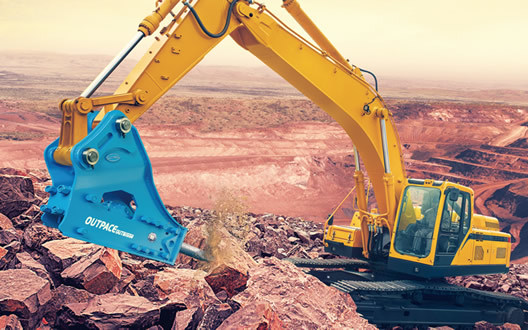How many aspects should be considered when choosing a crushing hammer?
Shenjia Hydraulic
Release time:
2023-08-09
In the construction process, the crushing hammer plays a crucial role, as it can better clean the floating stones and soil in the rock gaps during the excavation of the building foundation, achieving more efficient treatment of the building base and making the project more smooth and qualified. However, in order for such devices to achieve their expected functional effects, these aspects need to be taken into account when selecting them.

In the construction process, the crushing hammer plays a crucial role, as it can better clean the floating stones and soil in the rock gaps during the excavation of the building foundation, achieving more efficient treatment of the building base and making the project more smooth and qualified. However, in order for such devices to achieve their expected functional effects, these aspects need to be taken into account when selecting them.
1. The weight and bucket capacity of the excavator
Fully considering the weight of the excavator can prevent the excavator from tipping over due to the excessive weight of the crushing hammer when the boom is fully extended. If it is too small, it will not fully utilize the excavator's function, and it will also accelerate the damage of the hammer. Only when the weight of the two is matched can the excavator and its function be fully utilized.
2. Working flow and pressure
The working flow rate of hammers of different sizes varies. The flow rate of small hammers can be as low as only 23L per minute, while that of large hammers can reach over 400L per minute. After selection, the flow requirement should match the output flow of the excavator backup valve. The size of the flow determines its operating frequency, which is the number of impacts per minute, and the flow is directly proportional to the number of impacts. When the output flow of the backup valve of the excavator is greater than the required flow of the hammer, it will generate too much heat in the hydraulic system, causing the system temperature to be too high and reducing the service life of the components.
3. Structural vehicle mounted
There are currently three common exterior designs for crushing hammers, namely triangular, plywood, and box (also known as silent).
The triangular and sandwich types usually use two thick steel splints to protect both sides of the hammer core, and this structural design does not protect its front and back.
The box structure is a structure where the outer shell completely wraps the hammer body, and the outer shell is equipped with damping materials. It not only creates a buffer between the hammer body and the outer shell, but also reduces the vibration of the carrier. Its advantages lie in providing better protection for the hammer body during operation, low noise, reducing the vibration of the carrier, and also solving the problem of loose shells. This is also the mainstream and development trend of the global market.
These three aspects not only need to be taken into account in the selection process of the crushing hammer, but also in its use. By referring to these aspects, we can also determine whether the quality or model of the product meets the requirements. Only by ensuring that the quality and model of the product meet the requirements of use can we ensure that it can exert its application effect in the working process.






